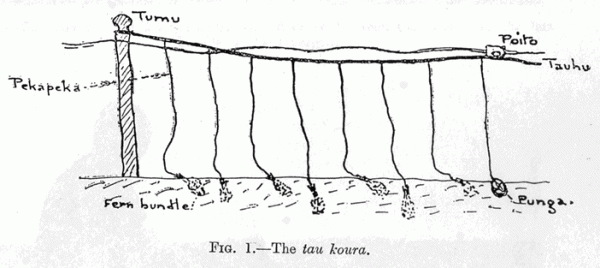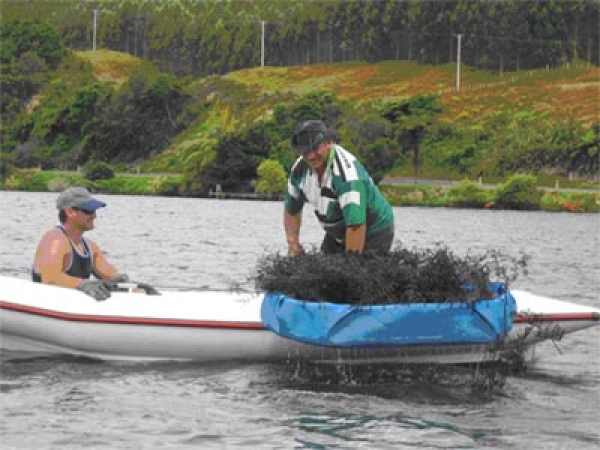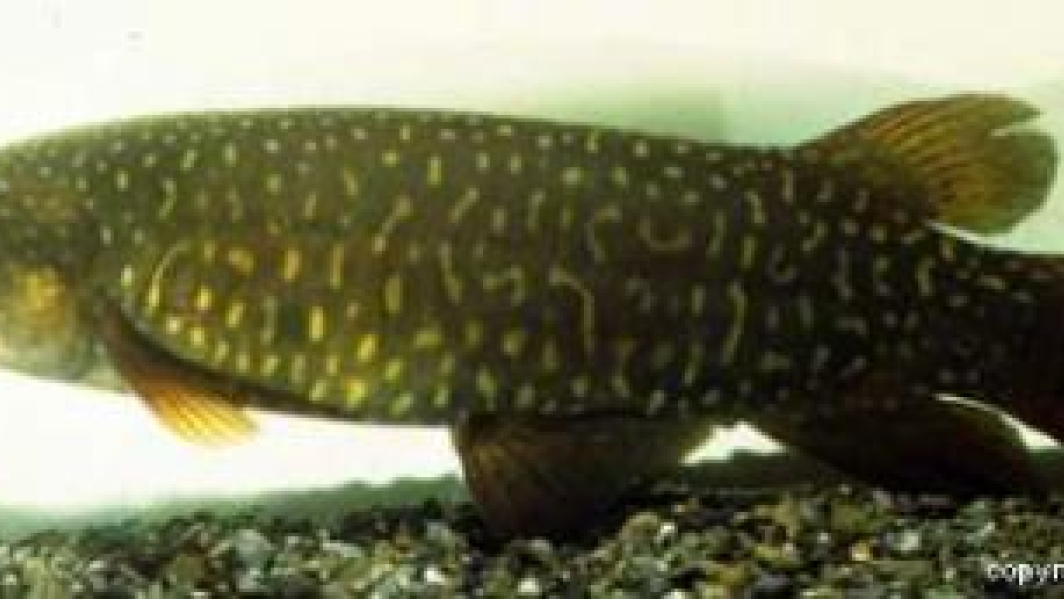Tau koura was the favourite traditional fishing method for harvesting lake koura used by Te Arawa, Tangata Whenua of the Rotorua area (Hiroa, 1921) and Ngati Tuwharetoa, Tangata Whenua of the Taupo area.
The traditional Te Arawa/Ngati Tuwharetoa method involved resting bundles of bracken fern fronds on the lake bed for koura to take refuge in and then retrieving the bundles into a canoe to harvest the koura.
The drawing below (from Hiroa 1921) shows and complete traditional tau koura, comprising the surface float line (tauhu) attached, at one end, to a surface-reaching pole (tumu) and a float (poito) at the other held in place by an anchor (punga), from which drop lines (pekapeka) reached to the bed with fern bundles attached.
To harvest the koura, the fern bundles were lifted onto a net of woven flax (the korapa, shaped like a large tennis racket without the handle) to prevent them escaping as they were lifted out of the water.
The tau used today by Ngati Pikiao at Rotoiti and nearby lakes (Willie Emery and Mana Malcolm) apply the same concepts as traditional tau koura, but make use of modern materials. The traditional bracken fern bundles are attached by synthetic ropes to a bottom line of copper wire anchored at both ends to large weights and the korapa is made of plastic mesh (see left photo).
Tau koura use as a monitoring tool
As well as being an effective fishing method, tau koura have been found to provide a very useful method for monitoring koura populations in lakes to provide a basis for assessing sustainable harvesting levels and other resource management decisions. A preliminary protocol for use of Te Arawa/Ngati Tuwharetoa tau koura method for monitoring has been developed and is currently being applied in koura monitoring and research being undertaken by iwi and collaborating NIWA researchers.
Reference
Hiroa, T.R. (1921). Maori food-supplies of Lake Rotorua, with methods of obtaining them, and usages and customs appertaining thereto. Transactions of the Royal Society of New Zealand 52: 433-451.
Acknowledgements
The content on this page is based on research by Ian Kusabs (Fisheries Consultant, Ngati Tuwharetoa, Te Arawa), Willie Emery (Kaumatua, Ngati Pikiao and Te Arawa Maori Trust Board, Rotoiti) and John Quinn (NIWA).



